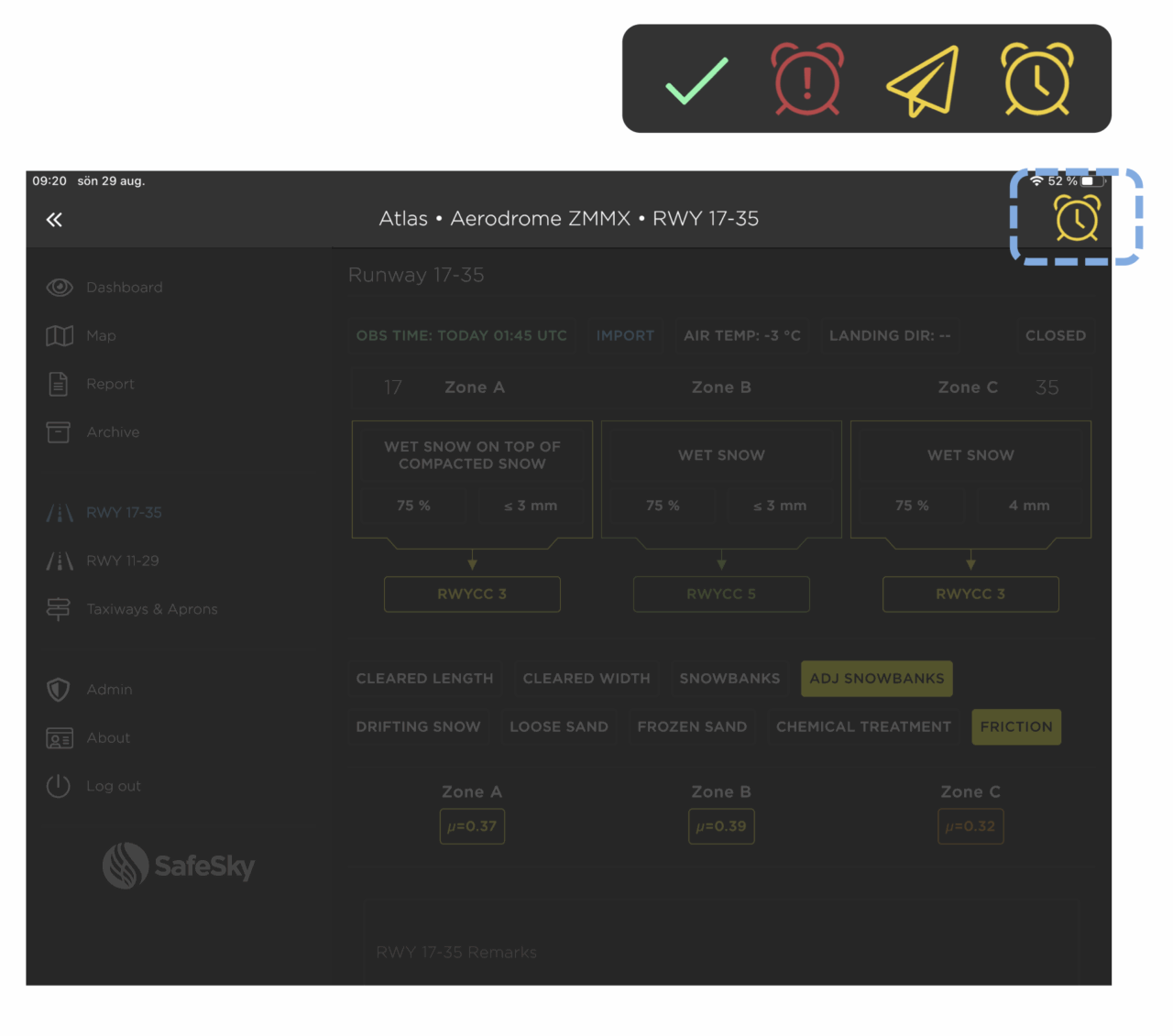SUPPORT modules
PIREP REPORTING
Airside Sync streamlines runway condition reporting by combining PIREP and RCR data in one system with automated, real-time insights. This improves compliance, supports decisions, and enables deeper analysis. Pilot input and RCR data trigger alerts, highlight discrepancies, and reveal trends—enhancing safety and efficiency through smarter, data-driven actions.
- PIREPs integrated with RCRs in real time
- Automated alerts for reassessment triggers
- Stronger compliance through data-driven insights



